If you have been following the keeper blogs, then I hope you will remember that we have had a very baby focused year here on the carnivore section at Wingham, with baby otters and baby binturongs (if you missed our earlier baby blogs you can still find out about our little ones early stages by clicking on these links, binturong otter). Its been a few months since I have given any sort of a mention to the babies on our section, and so thought that the “6 month” mark for some of them would be the perfect opportunity.
A well deserved pup-date!
Back in February, our smooth coated otters Bob and Pong became parents once again to a litter of 4 otter pups! Having sexed, weighed and microchipped them way back at the tender young age of 4 weeks old, these little mites have grown into virtually adult sized, demanding 6-month-old otters. We have 3 girls and a boy, however at the moment they are still very difficult to distinguish from one another; they all look like clones. In fact, it’s getting harder and harder to tell which one is Bob when he is sat amongst them they are that big!
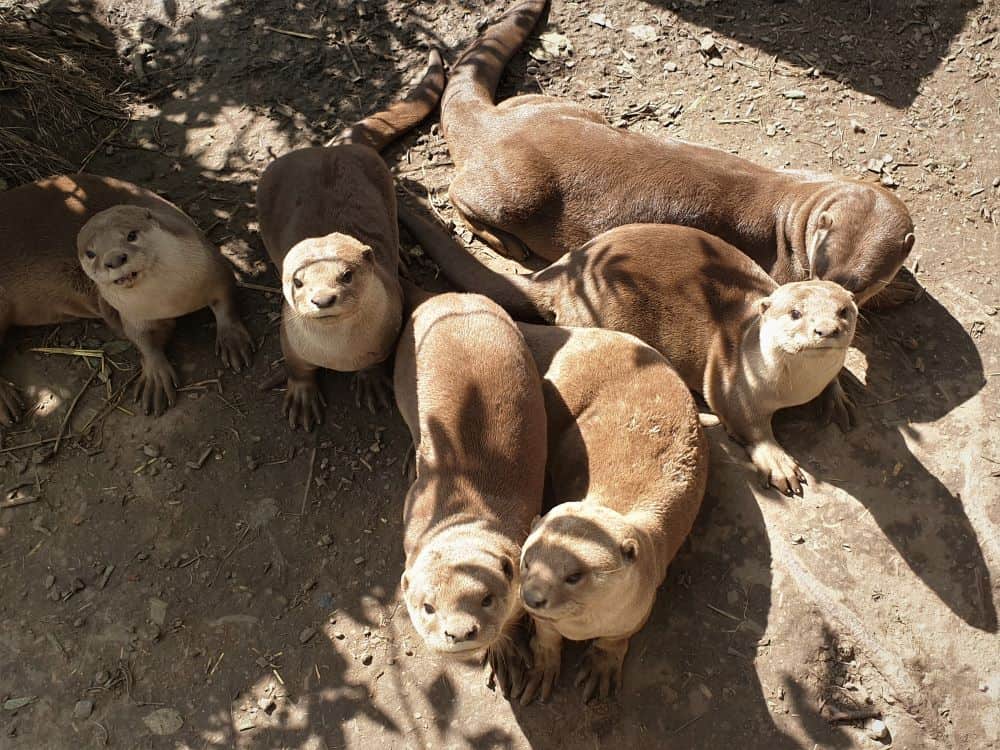
When we’ve had litters of otters at the park in previous years, we have to wait until we can really see the pigmentation under their chin and lip, and sometimes the scars they have given each other before we can identify individuals. As any of you that have seen or heard the otter talk, you’ll know that the main way you can tell smooth otters apart is by their personalities.
At the moment, our pups 100% take after their mum, Pong, by having very loud voices, very demanding natures, being super greedy and just walking all over their dad Bob (both figuratively and literally). Occasionally you can tell that one pup gets a little nervous or shy when compared to its siblings, but the majority of the time, they are a bundle of screaming, jumping teeth looking for more fish. So, I think we’ll have to wait and see how they all mature, and how their characters may develop as they get older.
When it comes to the pups, Pong has very much handed over all responsibilities to Bob. To be honest, she did this as soon as she could, as soon as the pups were starting to eat solids, feeding became Bob’s responsibility. Bob has been the doting father I always hoped he would be; we have to keep a close eye on him to make sure he is not being too selfless and that he still gets the right amount of food each day.
We target train our otters everyday at 12pm for husbandry purposes, and the adults were no trouble after their break when the pups were first born- in fact I think they looked forward to the break away from the babies.
Once the pups started coming out of the house more often, it didn’t take them long to realise that the target sticks mean food and would be waiting with their parents ready for their 12 o’clock training session. Now, the pups are actively participating with the training as well. They are all comfortable with the target and race each other to pop their nose on the end in order to win a piece of fish. One pup in particular I have noticed is really observant of Bob and has learnt by observation the “Paw-paw” behaviour, which is normally quite a tricky one to teach. It’s very exciting to watch them grow and to see how quick they are to learn. There was an article published recently about the importance of social learning capabilities of smooth coated otters if you were interested in learning more about this behaviour.
The next big milestone for the youngsters now will be at a year old when they should have stopped growing having reached their adult size. Sexual maturity won’t be reached until they’re between 2 and 3 years old. In the wild, smooth coated otter pups will stay with mum and dad for a few years, until they are old enough to disperse and start families of their own, even staying to help raise their younger siblings.
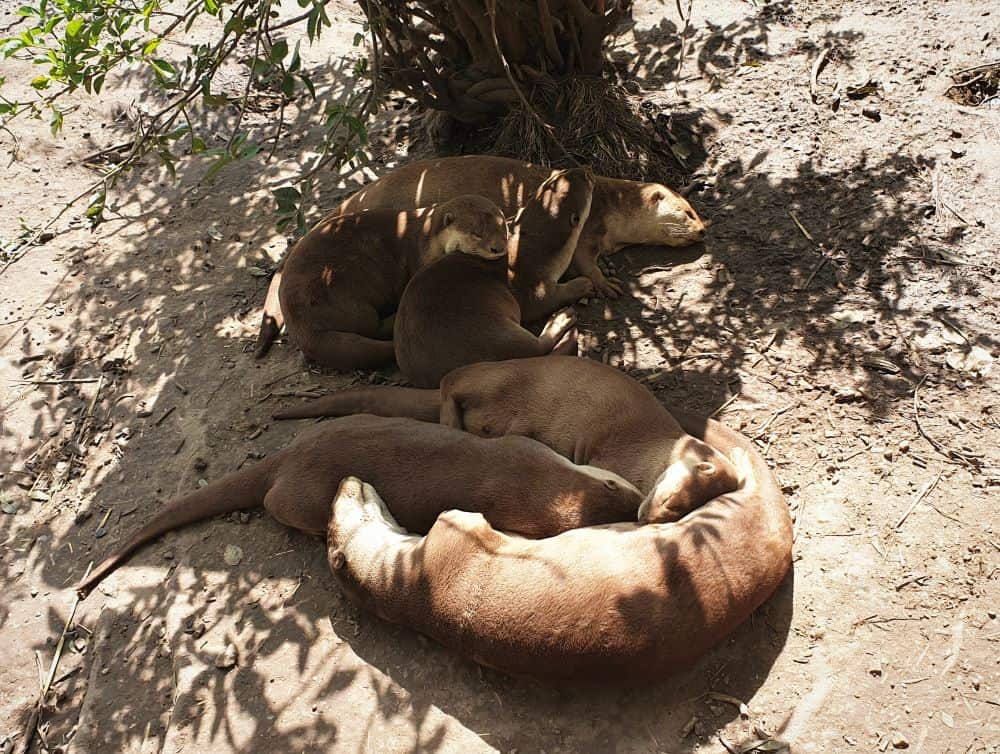
So, we got it (Bintu-)wrong!
Spring was most definitely our baby season on Carnivores, with both otters and binturongs born within a month. In March, we had our first ever litter of binturongs. If you remember back to my blog post, our female Karna, had a bit of a difficult birth which led to the kits having to be hand reared and sadly one dying within the first week due to birth complications. Only Kali, the surviving kit, remained who was hand raised by the park owner, Tony and myself. Now fast forward 5 months and this is Kali now!
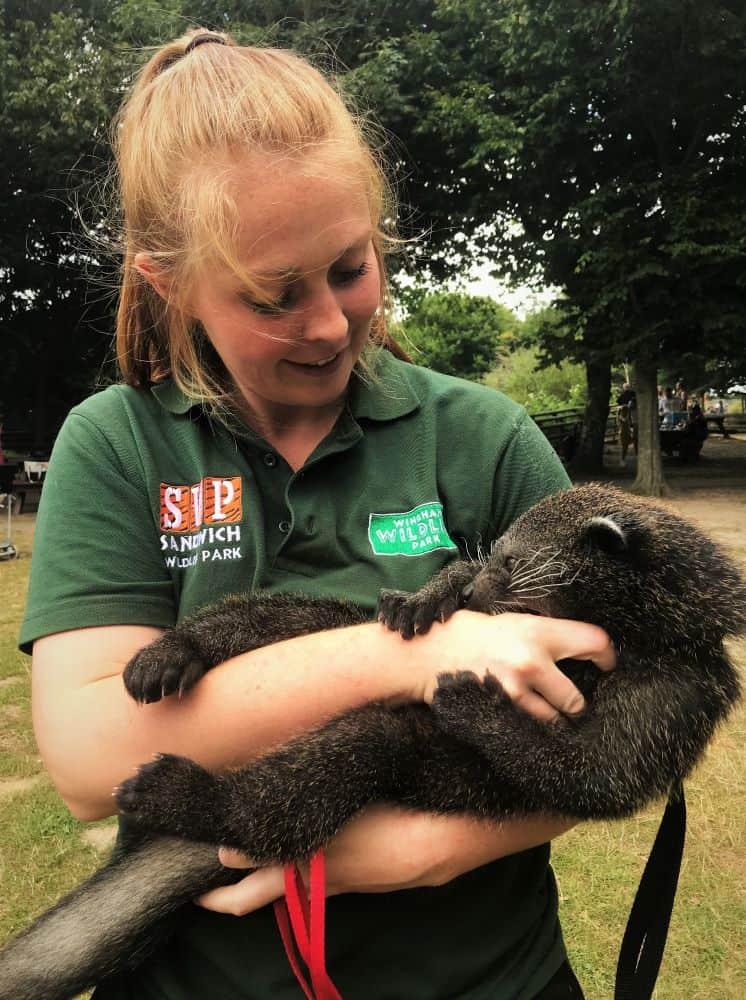
Binturongs are super hard to sex; even as adults males and females look very similar down below. Babies of any animal can be quite tricky the younger they are. When Kali was a few days old, we sexed her as female however we always knew that this was an approximation. Now she is 5 months old, it is quite evident through certain anatomical development that Kali is in fact a he! We have decided to keep his name the same though as he is used to it now.
Kali is growing up to be quite a confident binturong, with the attitude of an animal 5 times his size. At lunchtime every day, us keepers take him out of his enclosure into the park. Like any hyperactive toddler, he has a lot of energy to burn, so it’s the perfect opportunity to get him running around, exploring, and spending time with us. It’s also brilliant for you guys as visitors to the park to come and see him and learn a little bit more about binturongs from his keepers. He thoroughly enjoys these playdates and runs towards the penguin grass in the middle of the park because he knows its playtime.
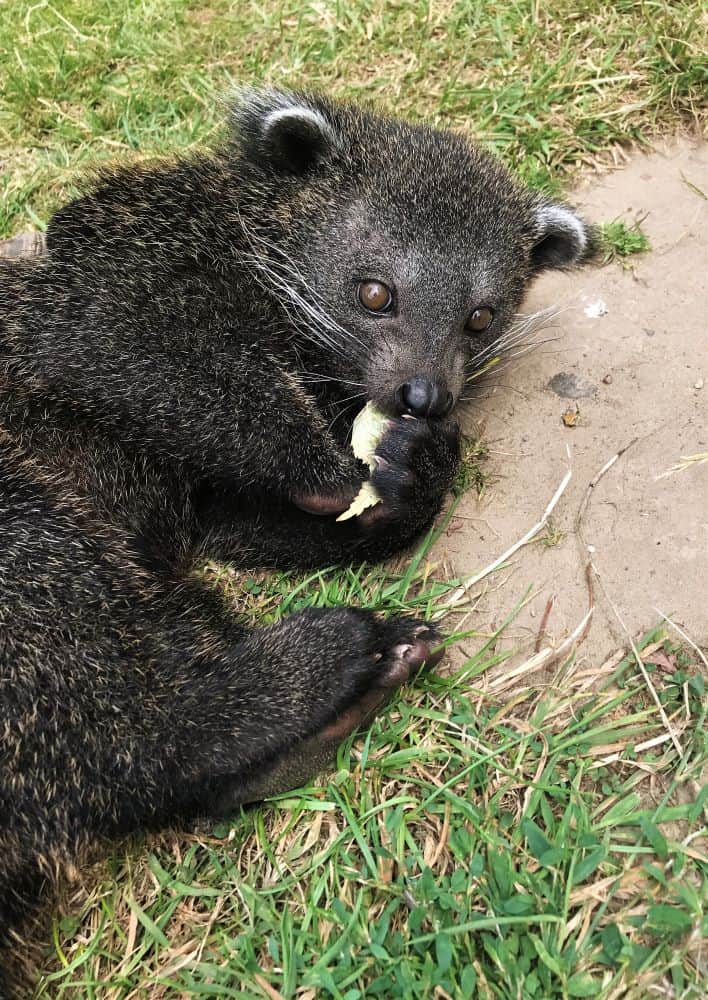
The long-term plan for Kali is unknown. I get asked a lot by customers if he could ever go back into the exhibit that his mum and dad live in. Binturongs are not social by nature, so unfortunately that probably isn’t going to be an option for him. For now, he gets all the attention he needs from the staff here, as well as endless amounts of play time and playfighting time with us too. What more could a baby binturong want?
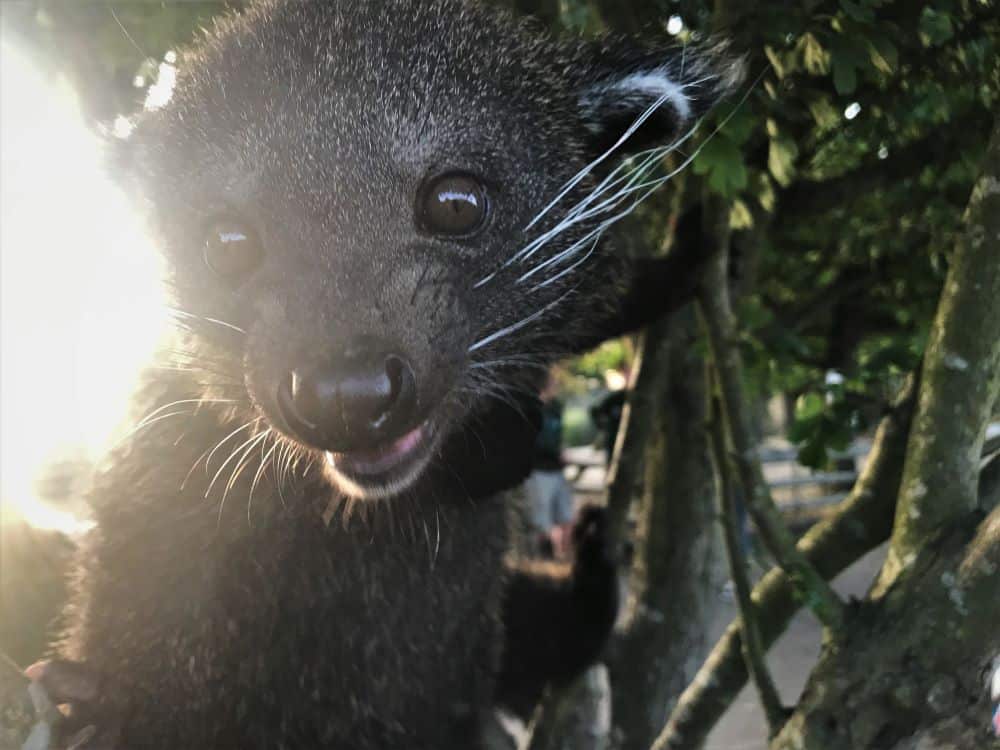
You’ve got to be kitting me!?
This is more of an introduction, than an update. 5 weeks ago, on the 16th July, Karna, our female binturong welcomed three beautiful new kits into the world. Thankfully, unlike her first labour, this one couldn’t have gone any better. With no complications, the kits have remained with her and Papa in the enclosure. We did have a sneaky feeling that Karna could be pregnant due to the physical changes we saw with her body when health check training her (as mentioned in my first blog about Kali). Binturongs have a gestation period of around 91 days, which means she must have got pregnant very soon after the caesarean section she had with Kali.
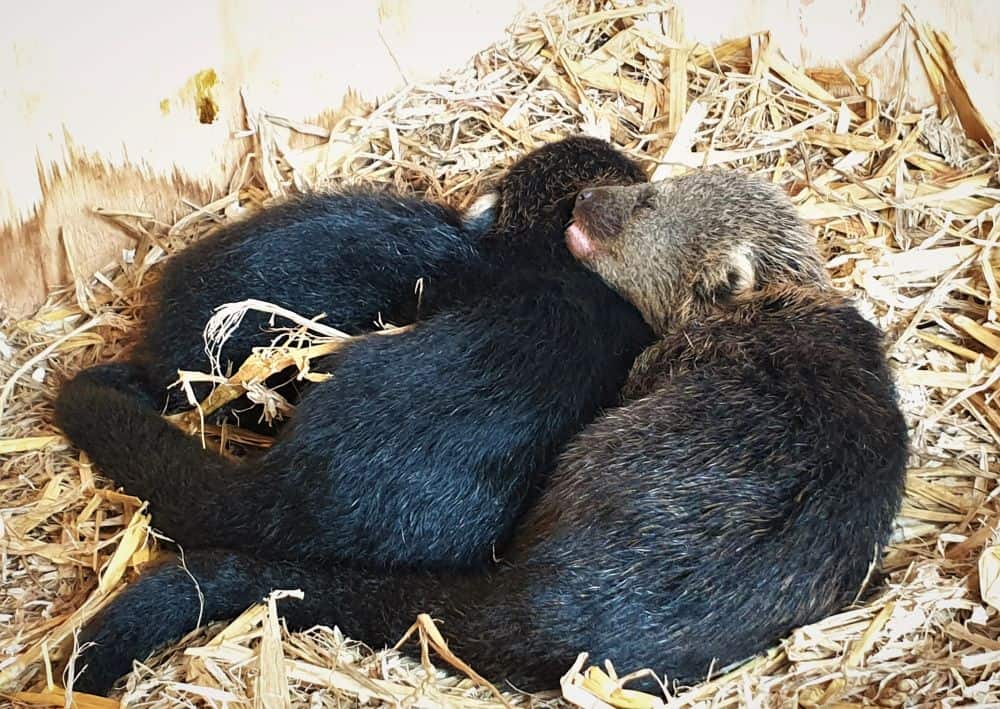
For her first time at being a mum, Karna is doing really well. It has been a really good opportunity to observe the development of binturongs and all the milestones they have when raised by their mum i.e. comparing Kali’s development with that of his new siblings.
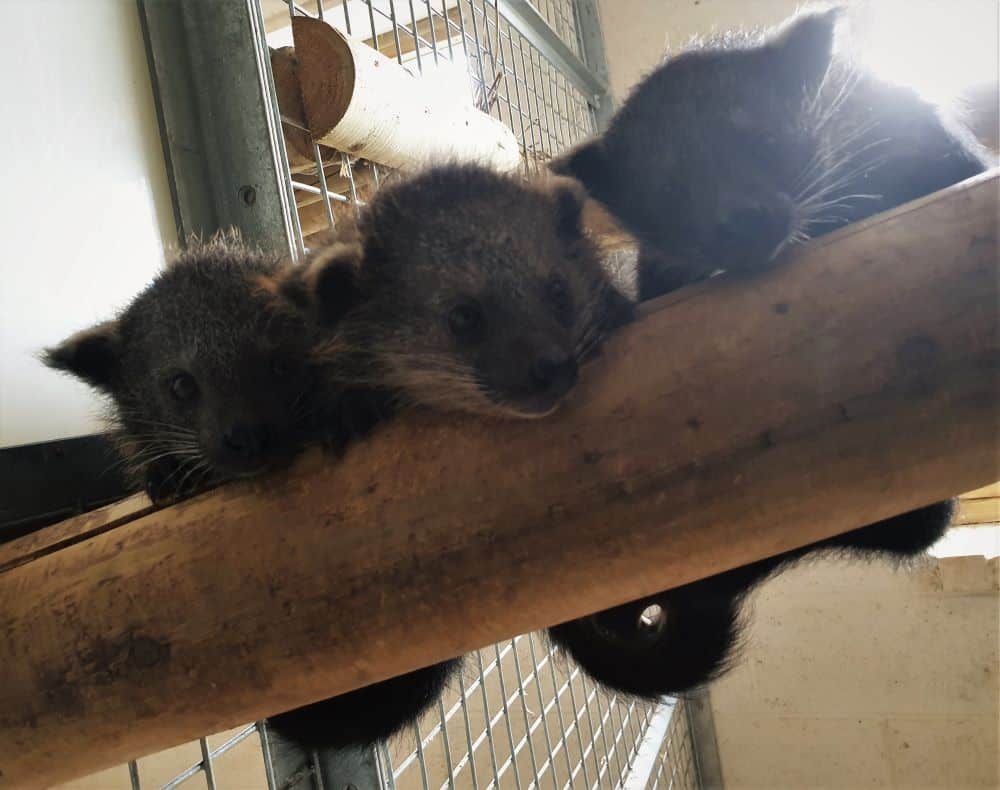
Obviously in the first few weeks we had a completely hands-off approach to allow to Karna to bond with the youngsters and to not add any stress to this inexperienced mum. Karna is so chilled; she has such a gentle nature and that did not change even with the new-borns under her protection. Papa however, her mate, is different. He has taken the protective father role very seriously and will keep a very close eye on us keepers whenever we are in the enclosure.
It seems that being very vocal is a very normal binturong kit trait, as like Kali, the three youngsters have always demonstrated that they have a good set of lungs on them! In terms of appearance, they are all varying shades of binturong. One individual takes after Papa and is incredibly blonde all over; the other two are less blonde with one being quite obviously darker compared to the other. Their coats, according to literature should not change with age, however I have noticed with Kali that he has gotten dark blonde highlights across his whole body now (he only had a blonde head when he was born) so we will have to wait and see.
At 4 weeks, the kits all got sexed (approximately), weighed and microchipped. They are all at very healthy weights and in really good condition so Karna is doing a fantastic job! This time, we had Kali to compare to with regards to immature binturong anatomy so we are slightly more confident that we got it right this time. So, we have *drum roll please*, three baby boy kits in there! We have held off with names for the moment and will hopefully wait until they are a bit older.
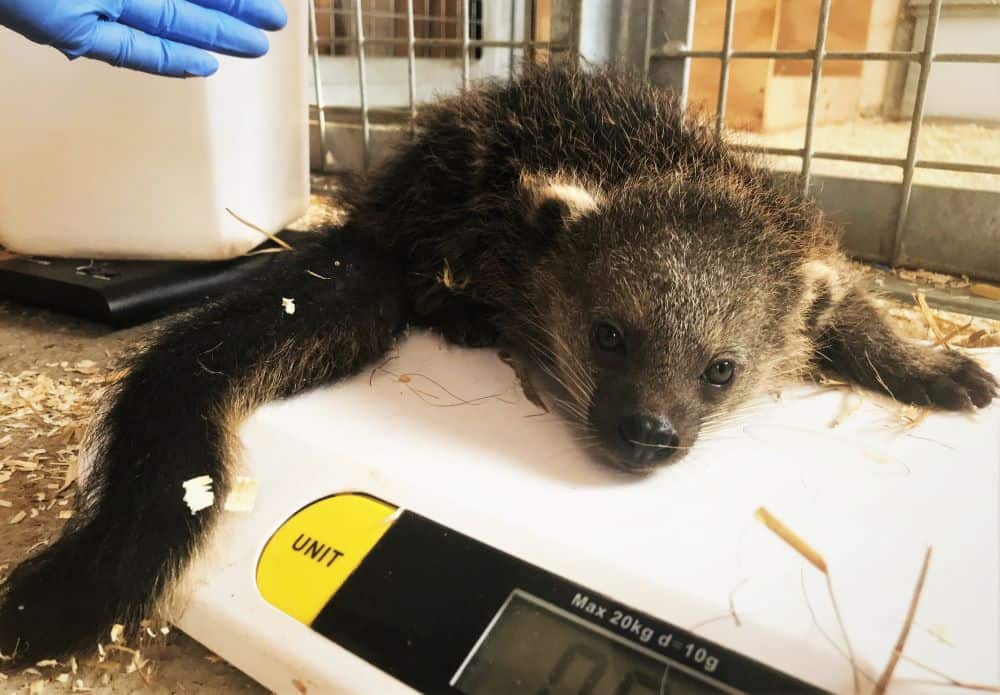
At the moment, the kits are still in the house of the binturong enclosure but are coming out of their nest box regularly and climbing around exploring after their parents. Come and see for yourself soon and don’t forget to meet Kali on the green at lunch time too!


